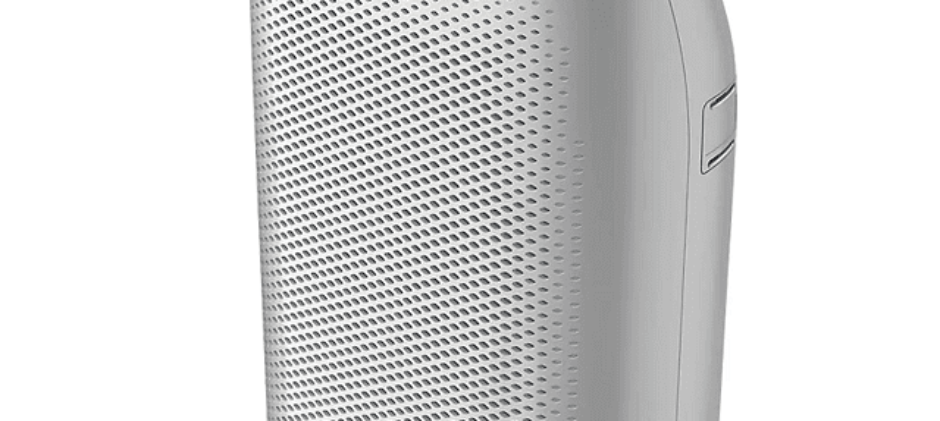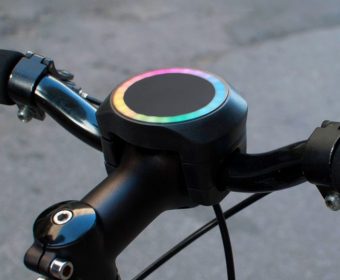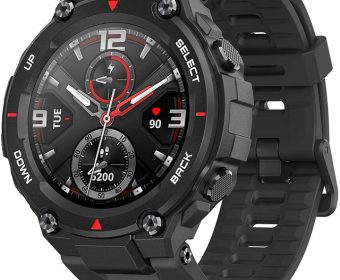- Homepage
- Gadget News
- How to Choose an Air Purifier?
How to Choose an Air Purifier?

More than eleven million people die per year because of pollution, and the result is far greater than those who are dying from AIDS, TB, and malaria combined. Several health effects are reported due to the short- and long-term exposure to polluted air. The pollution in the air causes many health problems, such as respiratory infections, heart disease, & lung cancer. Due to the contamination of air, it becomes essential to use air purifiers. Dyson, Philips, BlueStar, Eureka Forbes, LG, TruSens, Daikin, Panasonic and many other famous brands offer high-quality air purifiers. This article will let you know how to choose an air purifier.
What are Air Purifiers?
It is often called an air cleaner. Air purifier refers to a device used to remove impurities from the air in any room so that indoor air quality can be enhanced. These products are helpful for the allergy and asthmatic sufferers. Besides, air purifiers eliminate smoke & other pollutants in the air.
Why do you need an air purifier?
Compared to air outside, air indoors can be more harmful. There are household products like deodorants, cleaning agents, and inkjet printers which contribute to indoor air pollution. People who have dust allergies, asthma or other harmful diseases must have an air purifier. This product can improve the air quality by removing allergens, pollen, dust, pet hair and other pollutants which are not visible to our naked eyes. There are a few models that can absorb unpleasant odor from paints & varnishes.
How does an Air purifier function?
These products clean indoor air by using mechanical, ionic, electrostatic or hybrid filtration. In this procedure, polluted air is drawn via filters, and later, it is circulated back into the room. In addition, these products are able to absorb pollutants, dust particles and odor inside a room.
How Can You Choose the Right Air Purifier?
Before you select the best air purifier, you need to consider the following factors. So, let’s know how to choose an air purifier for your home.
Types of Air Purifiers:
Different air purifiers follow a range of technologies for functioning. Let’s know the types of air purifiers depending on which you will be able to select the best air purifier.
Mechanical filters:
It is a type of filter that uses a fan to force air through a dense web of fine fibers that can capture particles. Filters that have very fine mesh are known as HEPA filters. Along with removing microscopic particles, these kinds of filters can eliminate bigger particles like dust, pollen, and mold spores when these get suspended in the air.
A few filters have labelling as “HEPA-type” or “HEPA-like”, but these aren’t certified to fulfil the needs of a true HEPA filter. You should know that these filters are not helpful in removing gases or odors. Moreover, these have high maintenance costs. You must replace these filters every six to 12 months.
Activated carbon filters:
Unlike mechanical filters, when it comes to talking about activated carbon filters, you should know that activated carbon captures gases like odor-causing molecules. But these are unable to perform effectively against formaldehyde, ammonia, or nitrogen oxide. As this kind of filter doesn’t combat against particles, several air purifiers include both activated carbon and mechanical filters. This type of filter gets saturated quicker than mechanical filters. Besides, as a user, you should replace them more frequently, like every three months, whereas, for mechanical filters, every 6-12 months is the replacement period. These filters cost up to $50 each. So, you must plan your budget for the replacement of these filters accordingly.
Ozone generators:
These ones create ozone which reacts with certain pollutants for altering chemical composition. As a result, you can face harmful indoor air quality. Manufacturers of ozone generators say that these products emit safe levels of ozone. Several tests have found that even at the lowest setting, a few ozone generators crossed the Food and Drug Administration’s limit of 0.05PPM for medical devices. In addition, according to the EPA study, low levels of ozone don’t kill indoor pollutants. As per research, ozone has a connection to reduced lung function & increase the risks of throat irritation, coughing, chest pain, & lung tissue inflammation. Exposure to this gas could cause asthma, emphysema, and bronchitis.
Electrostatic precipitators and ionizers:
These electronic models charge air particles to make them stick like a magnet to plates on them. As these generate ozone, it is not recommended.
Ultraviolet germicidal irradiation (UVGI):
According to a few manufacturers, air purifiers use UV lamps to kill airborne viruses, bacteria, and fungal spores. But these could sometimes miss certain bacteria and mold spores, resistant to UV radiation. Hence, the UV light has to be strong enough. In addition, the exposure needs to last for minutes to hours.
Photocatalytic oxidation (PCO):
A few models use ultraviolet radiation & a photocatalyst like titanium dioxide to generate hydroxyl radicals used to oxidize gaseous pollutants. Based on the pollutant, dangerous outcomes can be produced, like ozone, formaldehyde, nitrogen dioxide, and carbon monoxide. Some field investigations have been done previously, which let people know how effective PCO air purifiers are. But according to a laboratory study that researchers conducted at Syracuse University in New York, these devices were unable to remove any VOCs which can be found in indoor air.
Photoelectrochemical oxidation (PECO):
It is the variant of PCO that emerged in 2017 from the manufacturer molekule. However, the molekule air purifier didn’t score well in the tests for dust, smoke as well as pollen removal. Although, when the more expensive molekule air pro was tested, on the highest setting, it performed better at removing contaminants.
Size of the room:
According to your room size, you need to decide which model you should choose. A larger air purifier will consume more electricity, but a smaller model will not be that much effective. Therefore, as a buyer, it is necessary to measure the size of the space before buying the appropriate model for your house.
Noise:
You should select the best product based on not only its performance, but also you need to decide how well you can live with it. As these machines will always run, they need to be quiet also. For instance, an around 50-decibel noise rating equals the hum of a refrigerator. When you purchase a product, you can find its decibel levels on its packaging or website listing.
CADR and ACH ratings:
Clean Air Delivery Rate (CADR) is a rating system developed by the Association of Home Appliance Manufacturers (AHAM) to demonstrate its efficiency. A high CADR value indicates that the model is very effective at cleaning the air in the room. Several products have undergone AHAM’s voluntary certification program in which they receive room size guidelines & the CADR on its AHAM Verifide seal. The volume of clean air that an air purifier is able to produce on the highest speed setting is reflected by the CADR.
Products that contain HEPA filters get the highest rating. Regarding this rating, you should know that CADR ratings vary and can remove tobacco smoke, dust, & pollen. Suppose you live with a smoker. In that case, you must select a model with a high CADR for tobacco smoke. Whereas Air Changes per Hour (ACH) indicates how often the product can change the entire air in the space within sixty minutes.
Energy Star certification:
These products need to run around the clock to deliver effective performance. Therefore, you should consider this fact before buying the best model from the market. Compared to the standard models, energy star certified products are 40 percent more energy-efficient.
Air Quality Indicator:
If the air quality changes in a room, the air purifier indicates this by changing its colour using an LED indicator. It is possible to modify the fan speed according to the air quality. Recent models of famous companies like Dyson and Xiaomi include default mobile apps to operate air purifiers remotely and check the home air’s quality.
Levels and Types of Filters:
The levels & types of filters are as follows:
- Pre-Filters: This kind of filter helps to remove large particles such as pet hair before the next stage of filtration.
- True HEPA (High Efficiency Particulate Air) Filters: This type of filter is used to clean pollen, animal skin and dander, mold spores, and dust. These are able to eliminate 99.9% of all particles ( even if it is as small as 0.3 microns). Users need to change the filters from time to time. If you use a large HEPA filter, it can remove more particles. The model’s performance depends on the filter’s size, material, and construction.
- Activated Carbon Filters: This kind of filter needs to be used with other filters. With the help of the Activated carbon/charcoal filters, an air purifier can absorb odors and gas. Then, it neutralizes smoke, chemicals, food smell & fumes.
- Carbon Filters: You should replace these after using them over time.
- Antibacterial & Germicidal Filters: These can eradicate dangerous bacteria and germs. UV & HEPA filters confirm that you are breathing sterile air. We can see the use of this filter in hospitals, kitchens, labs and daycare schools so that the danger of airborne infections is reduced.
- Charged Media Filters: These use an electrostatic charge filter with particle filtration to filter particles as small as 0.1 microns.
- Photocatalytic Oxidation (PCO) filter: A titanium dioxide-coated metal plate & UV light are used for oxidizing and breaking down chemicals during filtration.
Cost of replacement filters:
Filters need to be replaced every 6-12 months if these are pleated and activated carbon filters need to be replaced after every three months. Usually, these models come with an indicator light that informs you when you need to change the filter or clean them. Price of these filters varies widely. The price of the filters with odor-removing carbon will be $50, whereas large air purifiers cost $20 to more than $200.
Customer Service and Warranty:
You should know that air purifiers need changes after 12 to 18 months. Therefore, the after-sale service of the model you are purchasing is good so that the replacement can be easy and fast. As purchasing an air purifier is a big investment, it is necessary to confirm that you are getting a long warranty on the product.
Portable:
A few models weigh much lighter and more mobile than others. If you have small purifiers, it is possible to keep them on a desk or shelf & move them from one room to another. Whereas, the larger products are best kept stationary, however a few models come with casters that make them portable. Do you want to use an air purifier in the living room in the evening, in the home office during the day and in the bedroom overnight? Then, you must choose a smaller device. Remember that a product’s size is correlated to the room size which the purifier can clean effectively. That’s why the best model you buy for your nursery may suit your family room which is 3-4 times larger.
Energy efficiency:
The air purifier will be most effective, when they run almost constantly. Therefore, you must keep electricity costs in mind before buying. As we have mentioned before, a few models are Energy Star-certified, but different models pull different amounts of power that relies on the fan speed. Usually, small purifiers use less energy than larger ones. However, these are able to clean much smaller spaces. Purifiers used for bigger rooms can draw more energy. These come with higher fan speeds. Some purifiers include “eco” modes powering down the devices. These modes keep devices on standby when the sensors no longer detect any airborne pollutant.
Air pre-filter:
A few products, which are mainly used by pet owners, come with a pre-filter allowing them to catch pet hair before the air reaches the finer HEPA and activated carbon filters. You can wipe down the filters and reuse them.
Air Purifier Buyer’s Checklist:
Have you planned to purchase an air purifier? Before investing in an air purifier, you should check the following factors to ensure that you get the best experience.
- Your first job is to measure the size of the room so that you can find the square footage.
- Ensure that the product comes with a HEPA filter. Check separate ratings of the product for smoke, dust and pollen.
- You need to determine the filter type you require. For larger pollutants, including pet hair, you need a pre-filter. Whereas an activated carbon filter is necessary for removing gases, odors, etc. However, you can go for a HEPA filter which is capable of removing a minimum of 99.97 percent of particles which are 0.3 microns in diameter or more than that.
- You should look for the Energy Star logo for making sure that your chosen product is not an energy hog.
- You need to also check the decibel rating for the speed of the fan. These need to operate under 30 decibels at the lowest fan speed. Therefore, you can run these when you sleep. In addition, it is necessary to check the noise level at the highest speed. At the highest speed, the CADR rating is measured. If the air quality is expected to remain poor for a long time, like with wildfires, the high fan speed sound level is important. Remember that if the sound level is over 50 decibels, it will make the conversation difficult.
- Check whether there is a mode that can power on the model periodically to keep the air circulated in a room.
Conclusion:
Portable air purifiers can easily filter the air in a single room. These are different from the entire house’s air purifier systems & air filters that are integrated into a home’s heating, ventilating, and air conditioning system. These products are designed to keep the air clean in the entire house. This is all that you should learn about how to choose an air purifier. If you consider all of these factors while purchasing an air purifier, you will be able to easily shortlist and finalise a top-quality air purifier as per your needs and budget. If you have any questions left in your mind, do ask us via comments.
Frequently Asked Questions
- What is the most important thing in an air purifier?
The filter is the essential factor of an air purifier. Try to choose a model which has HEPA and EPA filters in it.
- Is there a downside to air purifiers?
A few air purifiers use UV & ionization, but the outcome of their operation is ozone gas that causes lung irritation and coughing. It can result in even permanent lung damage.
- Does an air purifier help with wildfire smoke?
If you use air purifiers correctly, these can help with wildfire smoke. These remove fine particles in the air and smoke and offer filtration for enclosed spaces.



